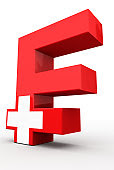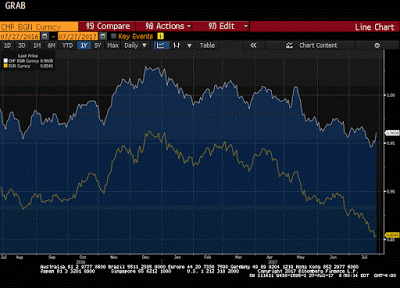
The Swiss franc is trading at its lowest level against the euro since the Swiss National Bank surprised the world by lifting the currency cap in early 2015. This week’s move has been especially pronounced. The euro has appreciated by a little more than 2% against the franc, Barring much of a setback tomorrow, it will be the largest weekly advance in 2 1/2 years.

The euro and the Swiss franc are highly correlated. Over the past 60-days, the correlation of percentage change of the two currencies is 0.85. For the past two years, the rolling 60-day correlation has not fallen below 0.75 and rarely moves above 0.90. That makes this week’s development all the more eye-catching. The franc has fallen 1.6% against the US dollar (~CHF0.9615), while the euro has risen 0.4%(~$1.1695).
The euro reached a new 30-month high today, edging briefly above $1.1775. The dollar bottomed against the Swiss franc last week (July 21) near CHF0.9440. Today it is posting a potential outside up day. The dollar briefly fell through yesterday’s lows in Asia and now has rallied above yesterday’s high. A close above yesterday’s high(almost CHF0.96) would be a bullish technical development.

This Great Graphic, created on Bloomberg, shows this on a line chart. The dollar’s performance against the franc over the past year, including its recent turn higher, is shown in the white chart. To show the euro in an intuitively clearer way, so we took the inverse of how it is typically quoted. The decline shown in the chart is the decline of the dollar against the euro.
The $2 mln question is if the Swiss franc is a lead indicator of the euro. Over the past year, it appears that, to the contrary, it is the euro that leads the Swiss franc. The euro is not just gaining against the dollar and Swiss franc, but it is also appreciated against the yen and sterling. The euro strength, the evolving ECB policy toward altering its risk assessment and likely the pace of its asset purchases is sucking in capital from other major financial centers.















